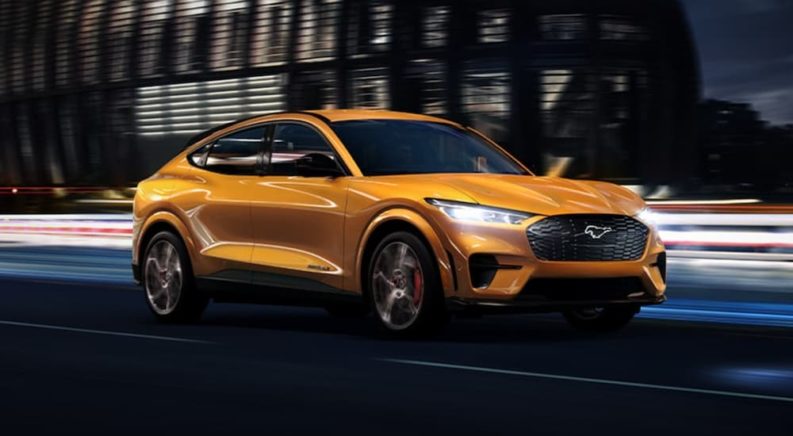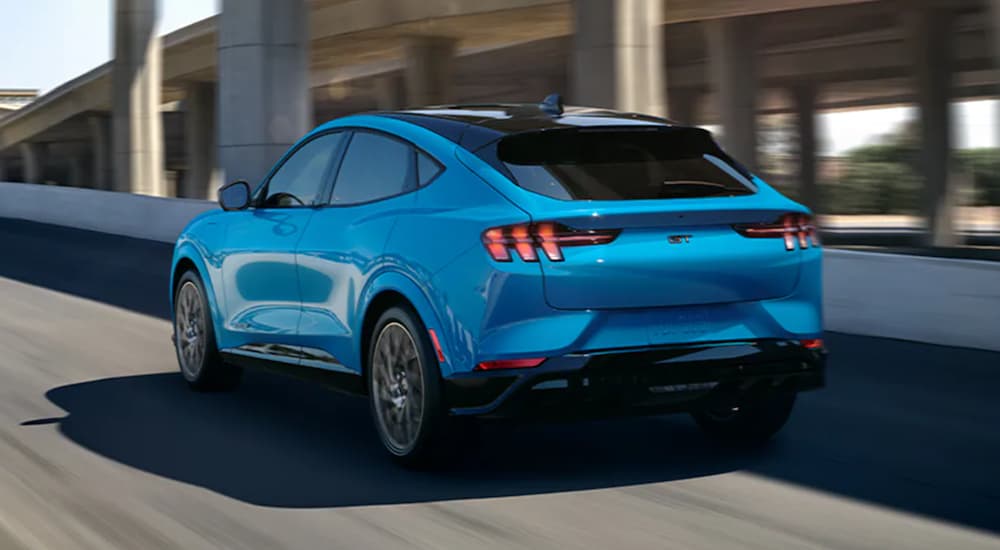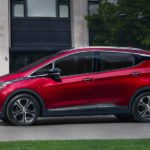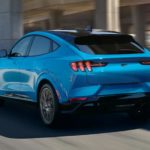Have you heard? The future is electric. GM has frequently made headlines over the last year for announcing its plans for an all-electric future with zero emissions and zero crashes. To bring this vision to life, GM is investing billions of dollars into facilities like Factory ZERO and in new EV technology. However, the Blue Oval does not plan to be left behind as its Detroit rival reaches for an electric future and new EVs are rolling into Ford dealers across the country.
When one of your friends sets a lofty goal, does it inspire you to set a new goal for yourself? Sometimes, it takes someone else’s ambitious goals to motivate us to achieve more, dream bigger, and reach higher. The same can be said for the healthy competition between GM and Ford, two American automakers that have fiercely competed to lead the industry at every turn for over a century. It’s this spirit of competition that we see as Ford announces its plans to usher in an all-electric future with models like the Ford F-150 Lightning and the Mustang Mach-E.
What does Ford’s vision for an electric future look like? Do models like the Lightning and the Mach-E live up to Ford’s “Built Ford Tough” reputation, or will they fail to impress? There’s no question that Ford is on the right track to revolutionize the EV segment and give GM a solid run to lead the race.
Ford’s Vision for the Future
Ford is sparing no expense to bring its vision to life and is investing $29 billion over the next four years. Roughly $7 billion of that investment will advance Ford’s autonomous or self-driving technology, while the remaining $22 billion will be dedicated to Ford’s electric lineup, ensuring that the vehicles reflect Ford’s reputation for offering exceptional capability and performance. You won’t find an electric Ford that doesn’t stand up to the “Built Ford Tough” slogan, and that’s exactly how Ford intends to keep it.
When you look closer at Ford’s $29 billion investment and its EV plans, you’ll find that it’s divided into three main components – commercial, retail, and sustainability. These targets show that Ford is thinking outside the box to make driving an electric vehicle attractive to consumers across all demographics, from businesses with fleet vehicles to your hard-working contractor behind the wheel of a capable workhorse. Ford’s plan is to make EVs more attainable and sustainable.
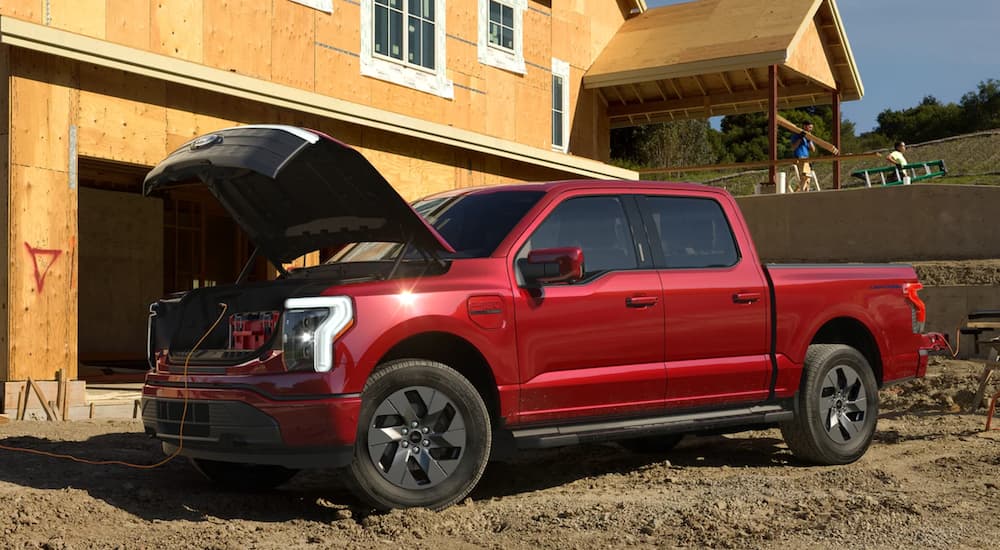
Target #1: Fleet Vehicles
The commercial or fleet side of the automotive industry is often overlooked when it comes to updates and enhancements. However, Ford is one of the largest commercial vehicle providers in the world, and businesses have their own special requirements when it comes to fleet vehicles. Businesses need vehicles that are reliable and efficient, capable of getting the job done time and time again.
Ford expertly targets its commercial lineup with the all-new electric E-Transit, the best-selling van in America. Ushering businesses into the future, this electric van will drastically impact the market by delivering better performance and capability while offering the same work-ready configurations for business customization. This customization takes on a new meaning when it comes to battery range, with the E-Transit offering up to 126 miles on a single charge depending on layout. What will this mean for fleet customers?
Most fuel-powered commercial vans travel around 74 miles per day. With the electric E-Transit nearly doubling that range, this translates to more savings for businesses. The E-Transit is able to travel further on a single charge, which means less downtime and higher productivity. This is on top of the thousands of dollars a business will save on fuel and maintenance since EVs require minimal routine upkeep. In turn, the business can reinvest that money into further growth and its employees.
Target #2: Retail Vehicles
Ford’s second target in its EV strategy is its consumer lineup, and that starts with the introduction of the 2021 Mustang Mach-E and the 2022 F-150 Lightning. When you add a name like “Mustang” to a model, there’s bound to be some pushback from purists who love the Mustang for what it is – an iconic speed demon. Despite this, Ford took the risk and designed a highly capable SUV that lives up to the Mustang name, especially when you’re behind the wheel of the Mach-E GT. The GT is powered by an extended range battery that delivers up to 480 horsepower and 634 lb-ft of instant torque for an acceleration from 0 to 60 mph in just 3.5 seconds. Nimble handling and jaw-dropping power define this model and will leave you breathless in the driver’s seat.
The 2021 Mustang Mach-E paves the way for even bigger changes to the Ford lineup with the debut of the 2022 F-150 Lightning. The F-Series has been the best-selling truck in America for decades and, like the Mustang, is an icon on the road. Ford once again takes a huge risk to prove that the F-150 can be equipped with an electric powertrain and offer more capability than ever before. The question is whether or not F-150 drivers are ready to make the change.
The F-150 Lightning makes switching to an electric truck even sweeter by extending the proven capability of the traditional F-150 and redefining what a truck can be. Ford does this by allowing you to customize the truck’s power to your needs with a standard or extended range battery. This option is significant, especially when you consider available tools like Ford Intelligent Backup Power, which allows your truck to power your home for up to 96 hours during a blackout, and ProPower Onboard, which equips the truck with numerous outlets to power everything from your laptop, phone, and tablet, to power tools and beyond. This certainly isn’t the F-Series from your dad’s generation.
Target #3 Attainability and Sustainability Made Easy
Ford’s final targets in its EV strategy are attainability and sustainability. Years ago, electric vehicles were only attainable for the wealthy due to their sky-high price tags. Ford is working to change that by making both its commercial and consumer EV options as affordable as its gas and diesel models. This means more people and businesses will have access to models like the Mach-E, Lightning, and the E-Transit.
Sustainability is also at the heart of Ford’s EV strategy and proves that the automaker won’t leave you “high and dry” once you purchase an EV. Ford is educating customers on what it means to drive an EV and the key components to sustainability and longevity. This is apparent as Ford offers access to the largest public charging network in North America via the FordPass App, making it easy to locate any of the over 63,000 locations and make payments. Add in the 2,300 certified EV Ford dealers throughout the country, and your EV is always in good hands.
Ford’s Electric Future
Healthy competition fosters innovation. We see this as GM and Ford lay the groundwork to usher in an all-electric future by 2025. This fierce competition trickles down to consumers who are reaping the benefits of Ford’s innovation in models like the Mach-E and the F-150 Lightning, as well as in fleet vehicles like the best-selling E-Transit. The future is truly electric, and with Ford involved, that’s a remarkable thing considering the Blue Oval’s rich history in shaping the American automotive landscape for the last century.

